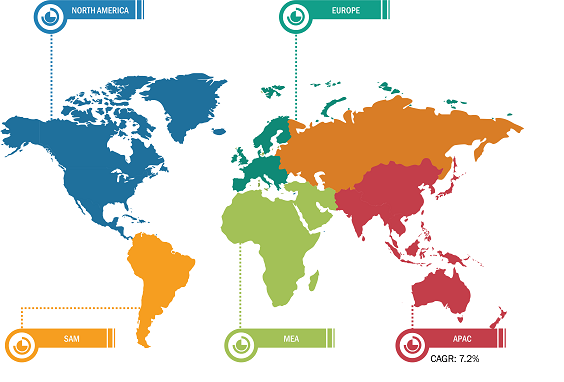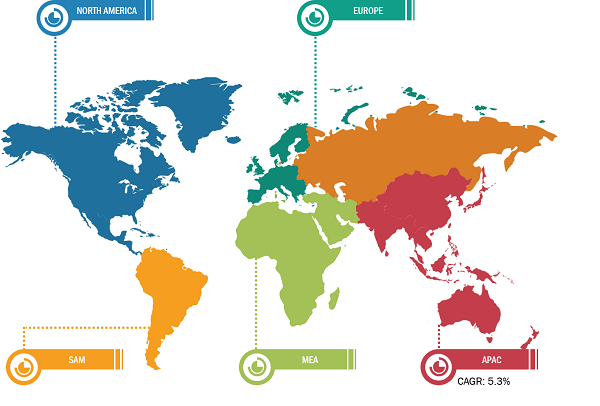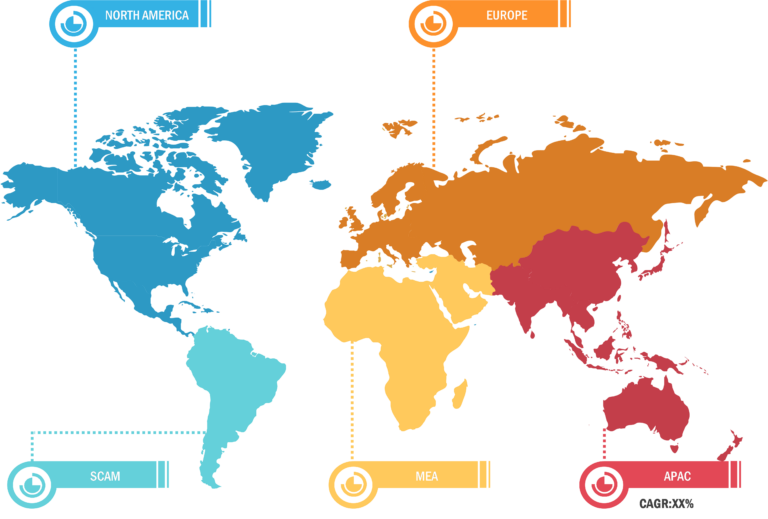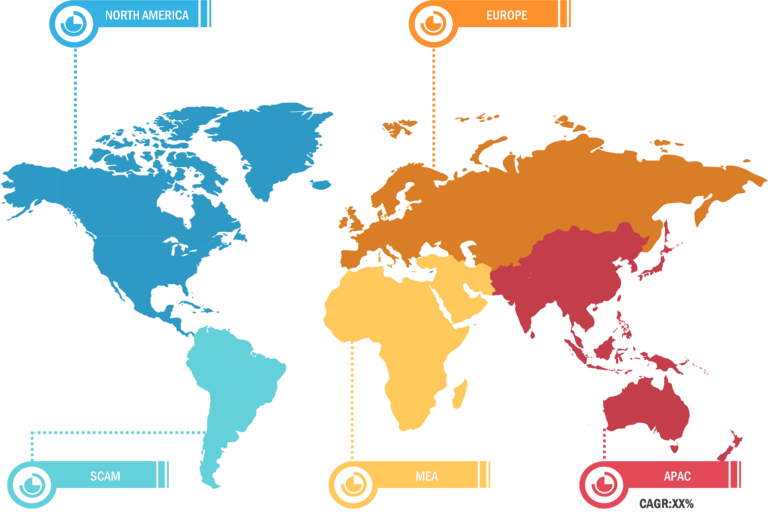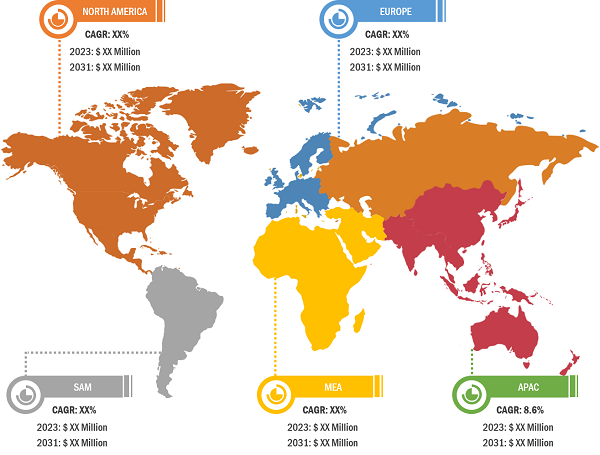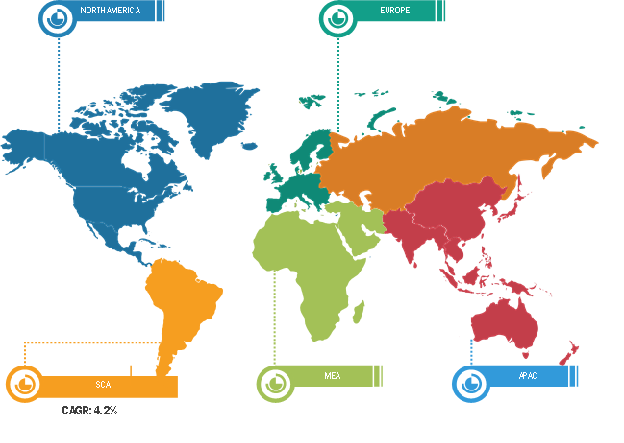
Feed Anticoccidials Market
South & Central America is expected to register the highest CAGR in the feed anticoccidials market during 2023–2031. Asia Pacific held the largest share of the market in 2023. Asia Pacific has the presence of a vast number of domestic animals. Recently, the animal healthcare industry has experienced significant changes due to rising awareness and health expenditure, particularly in India and China. These countries have experienced significant growth in livestock breeding for meat and poultry products. Livestock producers are using anticoccidials in their animal feed to meet the increasing demand for milk and meat products. China is one the largest producers of pork and poultry, creating effective control measures for diseases such as coccidia, which can impact animal health and growth rates. The occurrence of coccidiosis in intensive farming operations makes the adoption of feed anticoccidials crucial in mitigating economic losses. These losses are generated from decreased feed conversion efficiency, lower weight gain, and increased mortality rates among the infected animals.
The government of China focuses on food safety and quality, which propels the market for feed anticoccidials. The Ministry of Agriculture and Rural Affairs (MARA) and other regulatory bodies have stringent guidelines for the use of veterinary drugs and feed additives, ensuring the safety and efficacy of anticoccidial products. Furthermore, there is a growing trend of the use of natural and nonchemical anticoccidials in China.

Introduction of Non-Ionophores in Animal Feed to Create Opportunities for Feed Anticoccidials Market
Ionophores have some degree of antibacterial activity and fit the classical definition of an antibiotic. All ionophores are approved for broiler chicken production, but not all are approved or safe for turkeys. Salinomycin and narasin are quite toxic for turkeys and equines. As ionophores are antibiotics, they should not be used continuously but instead rotated with different anticoccidials. Moreover, there are stringent regulations on using antibiotics in feed as an additive. Thus, manufacturers are developing different anticoccidials that cannot be called antibiotics.
Non-ionophores are compounds produced by chemical synthesis; thus, they fall under the category of chemical anticoccidials. They destroy coccidia by cidal activity or suppress coccidia by static activity. They have no known antibacterial activity; hence, they are not considered as an antibiotic. Non-ionophores are products containing nicarbazin, zoalene, amprolium, clopidol, decoquinate, robenidine and diclazuril. EW Nutrition—an agribusiness company that creates solutions that bring reliable benefits with reduced need for antibiotics, especially in feed—has developed non-ionophores for animal feed. Owing to all these factors, livestock farmers concerned about using antibiotics in animal feed can opt for non-ionophore anticoccidials. Therefore, the introduction of non-ionophore in animal feed is expected to offer lucrative opportunities for the feed anticoccidials market during the forecast period.
Feed Anticoccidials Market: Segmental Overview
Based on type, the feed anticoccidials market is segmented into ionophores, chemical anticoccidials, and chemical ionophores. The market for the ionophores segment is subsegmented into monensin, salinomycin, and other inonophores. The market for the chemical ionophores segment is further bifurcated into nicarbazin and other chemical anticoccidials. The chemical anticoccidials are expected to register the highest CAGR in the forecast period. Chemical anticoccidials are synthetic compounds used to prevent coccidiosis in livestock animals. Chemical anticoccidials are becoming increasingly popular among feed manufacturers as they result in a reduced number of parasites, lowering the oocysts output. Moreover, as chemical anticoccidials do not have antibacterial activity, they are not categorized as antibiotics. This factor is driving the demand for chemical anticoccidials among feed manufacturers that prevent the use of antibiotics and growth promoters.
By form, the feed anticoccidials market is bifurcated into dry and liquid. The dry segment held a larger share of the market in 2023. Anticoccidials in dry form ensure optimal product distribution in feed and ensure uniformity and excellent mixability. The powdered and granulated feed anticoccidials also ensure a lower risk of product carryover and allow flexibility in forming premixes, which drives their demand among feed manufacturers, premix formulators, and livestock farmers. The dry anticoccidials also have a longer shelf life, and they are easy to transport and convenient to store. All these factors are significantly bolstering the feed anticoccidials market growth for the dry segment.
The feed anticoccidials market, based on livestock, is segmented into poultry, ruminant, swine, and others. The swine segment is expected to register the highest CAGR during the forecast period. Coccidiosis is a common problem in pigs that negatively impacts the small intestine and leads to scour in suckling piglets. It causes diarrhea with yellowish and whitish, foul-smelling stools. Infected pigs excrete oocysts that are coccidia eggs, which also contaminate the farms. Therefore, anticoccidials are incorporated into pig feed to prevent infection and ensure the wellness of the pigs. With the increasing focus on hygiene and high-quality, nutritious meat, livestock breeders prefer medicated feed that ensures disease prevention and wellbeing.
Feed Anticoccidials Market: Competitive Landscape and Key Developments
Phibro Animal Health Corp, Kemin Industries Inc., Elanco Animal Health Inc., Zoetis Inc., Huvepharma EOOD, Innovista Feeding Solutions Pvt Ltd, Impextraco NV, Virbac SA, International Animal Health Products Pty Ltd, and Zamira Australia Ltd are among the prominent players profiled in the feed anticoccidials market report. These market players focus on providing high-quality products to fulfill customer demand. They are also adopting strategies such as new product launches, capacity expansions, partnerships, and collaborations to maintain a competitive edge in the market.

